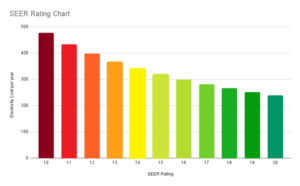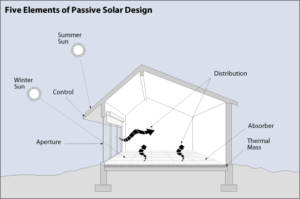Energy Efficient HVAC-system and Building Design go hand in hand. By incorporating features into both systems, you can significantly reduce the energy consumption of a building. Here are some key aspects of each:
Energy Efficient HVAC Systems
- High-Efficiency Equipment: Look for HVAC systems with high SEER (Seasonal Energy Efficiency Ratio) or EER (Energy Efficiency Ratio) ratings. These ratings indicate how efficiently the system converts electricity into cool air.
- Variable Speed Operation: Variable speed compressors adjust their output to meet cooling needs, unlike traditional on/off systems that waste energy.
- Proper System Sizing: An HVAC system that is too large or too small for the building will waste energy. A qualified contractor can perform a heat load calculation to determine the right size system for your needs.
- Regular Maintenance: Regular maintenance of your HVAC system, including cleaning filters and coils, can help it operate more efficiently.
Building Design for Energy Efficiency
- Passive Solar Design: Passive solar design techniques use the sun’s natural heat to warm a building in the winter. This can include south-facing windows, thermal mass (materials that absorb and release heat slowly), and proper insulation.
- Air Sealing and Insulation: Air leaks can allow conditioned air to escape, wasting energy. Sealing air leaks and adding insulation to the attic, walls, and foundation can significantly improve energy efficiency.
- Energy-Efficient Windows: Windows that are low-emissivity (low-e) coated and have double or triple panes can help keep heat in during the winter and out during the summer.
- Energy-Efficient Lighting and Appliances: Using LED lighting and energy-efficient appliances can help reduce your overall energy consumption.
By combining these strategies for energy-efficient HVAC systems and building design, you can create a comfortable and healthy indoor environment while saving money on your energy bills. Here are some additional tips:
- Landscape with trees: Trees can provide shade in the summer and help block cold winds in the winter.
- Use smart thermostats: Smart thermostats can learn your heating and cooling preferences and adjust the temperature accordingly.
- Take advantage of natural ventilation: When possible, open windows and doors to take advantage of natural ventilation.
By following these tips, you can create a more energy-efficient home or building that is comfortable, healthy, and cost-effective.
Looking to install a commercial HVAC System or Duct work in your Business Area?
Contact Vipul Ac to learn about our HVAC Service
Call +91 8000092000 Today.


